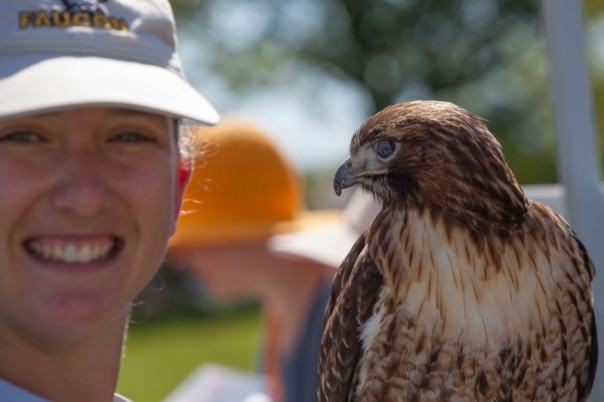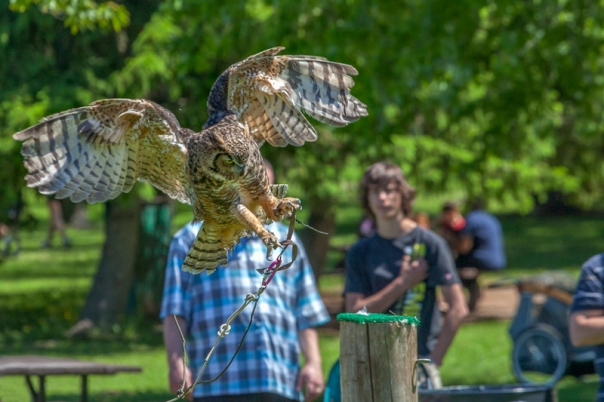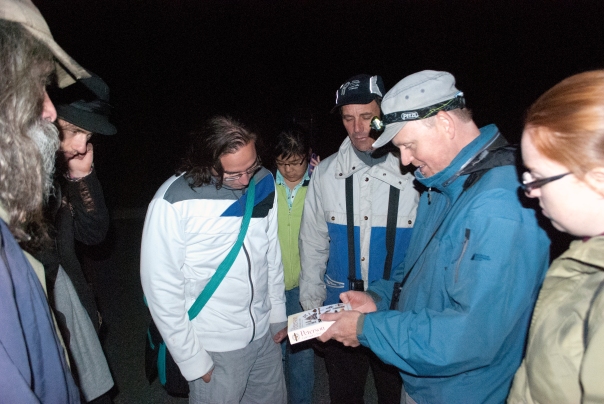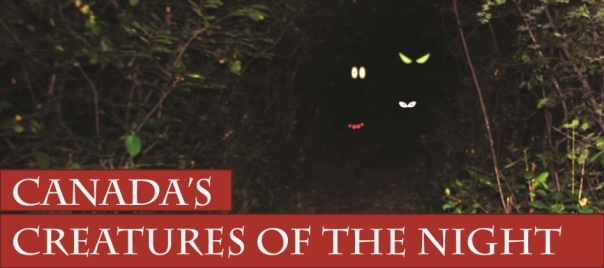
We began our walk along the dark trail guided only by the beams of light provided by our head lamps and flashlights. The low, constant hum of crickets could immediately be heard from the brush lining the path and was occasionally punctuated by the chirp of birds that had bedded down for the night. We approached our first bait station, located near the trail entrance, to see what creatures our fermented brew had attracted.
By day, Ottawa’s Mud Lake is host to a wide variety of active creatures from snapping turtles, to blue heron and all manner of insects, but by night, the wooded areas surrounding the lake transform and — if you’re lucky or have a particularly attuned set of eyes – a very different set of creatures can be seen.
On this evening, a group of visitors had gathered at Ottawa’s Mud Lake to explore the often overlooked bio diversity of the area at night. A prized sighting would have been a nighthawk or screech owl and our eyes periodically darted up to the sky hoping to see the silhouette of one of these illusive creatures.
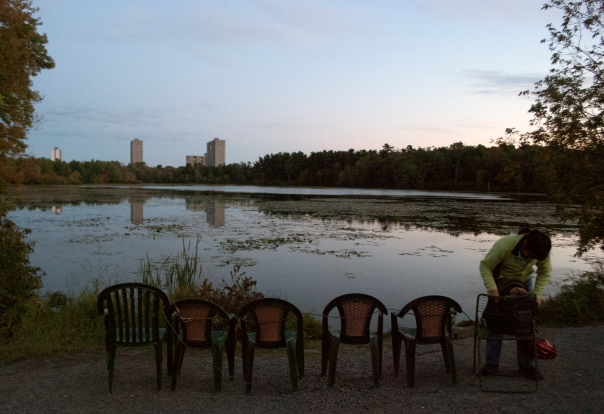
Preparing for the upcoming night walk at Ottawa’s Mud Lake.
Spotting nocturnal animals is a fun activity, but it’s also an important one if we are to know the makeup of Canada’s biodiversity. Nature Canada conducts a bio count in the spring and fall seasons as both a fun public event to help people connect with their natural environment, but also as a scientific exercise — to highlight the importance of paying attention to the state of Canada’s local biota. Shifts in the biological makeup of an area could signal environmental changes or problems that we as stewards of the environment need to know about.
We had no luck at the first bait station. Our mixture of brown sugar, oats, yeast, molasses and maple syrup should have done the trick to attract some of Canada’s over 2000 species of moths, but the cool night time temperatures of the approaching fall season were hindering our bait’s effectiveness.
“Moths are cold blooded so it may be too chilly for them this evening,” Our guide Alex MacDonald said. “They actually need to warm up in order to digest their food, otherwise they can’t eat.”
We carried on deeper into the woods, a rabbit stopped to observe our group at one point, its eyes glowing eerily from the reflected light of our camera flashes. At our second bait station we encountered not moths, but a group of white banded ants that our sweet potion had attracted. The ants quickly scurried away from the gaze of our lights, but we were able to get a close look at a black spider that had set up a web between two bushes nearby.
As we made our way to the final bait stations, we stopped to look out on the lake. A muskrat bobbed up and down in the dark water as it made its way to the far shore.
At the final station we found that our bait had attracted a moth! It stayed still long enough on the tree for us to identify it as a sharp-winged shade. Based on what we know about moths (and our own limited success at spotting them at the Mud Lake nature walk) in the fall season, moths become more difficult to see due to falling temperatures. However, there are plenty of other nocturnal creatures that can be seen year-round in the Canadian environment.
Chris Earley is an Interpretive biologist at the Guelph Arboretum at the University of Guelph, where he’s been leading night time nature walks for close to 20 years. He says that many of Canada’s nocturnal creatures can still be seen when the temperature drops including: great horned owls, barn owls, flying squirrels, rabbits, coyotes and other small mammals.
“Nature walks are actually a great winter activity,” Earley said. “The freshly fallen snow makes it a very pretty environment to go owl watching.”
Earley leads evening nature sightseeing events and workshops called Owl Prowls in which a group of visitors learn about the creatures before heading out into a wooded area at the arboretum to attempt to spot or hear the owls using territorial calls.
Earley says going out and exploring Canada’s nocturnal creatures can lead to some interesting nature stories and sightings.
“One time, As I was doing a screech owl call we actually had a flying squirrel swoop down and fly over our head. It was a really cool thing to see.”
For those interested in going on, or organizing their own, nature walk we offer the following tips to improve the experience:
Dress Warmly
Often times you’ll be standing still listening for creature noises or stopping to examine an animal you’ve come across. Don’t underestimate the drop in temperature during the night.
Bring Flashlights, but use them sparingly
Flashlights will not harm nocturnal creatures, but they will scare them off. It’s often best to let your eyes adjust to the natural light reflected by the moon than it is to use battery powered lights.
Bring a recorded owl call
Recorded owl calls are a great way to induce a barn or screech owl to return a call, but use them sparingly as owls will assume a potential rival is infringing on their territory and you don’t want to disturb them too much! It’s best to start with small owl sounds first, like the saw-whet owl, and work your way up to the larger owls because the calls of larger owls will scare away the smaller creatures.
Be as quiet as you can
In the dark, listening to creatures can be as important (and rewarding) as seeing them with your eyes. Naturalists are just as happy to hear an owl as they are to see one. However, you do stand a greater chance of seeing animals if you’re not making a lot of noise.
Have people look in different directions
Organize your group so that your eyes cover as much of the surrounding area as possible. A sighting is a sighting whether it’s done by you or someone else!
Know the trails before heading out
The last thing you want is to be lost out on the trails in the middle of night. Make sure you have prior knowledge of the pathways and always no how to get back to the entrance. Bring a map, if possible, and ensure you have some a cellphone in case of an emergency.
Thanks to Alex MacDonald with Nature Canada, Chris Earley with the University of Guelph and Casey Whiterock with the Stanley Park Ecological Society for providing information for this article. For those looking for more information on the Guelph Arboretum’s Owl Prowl events, please visit http://www.uoguelph.ca/arboretum/. For information on the Stanley Park Ecological Society’s Creatures of the Night theatrical Nature Walks visit http://www.stanleyparkecology.ca.

